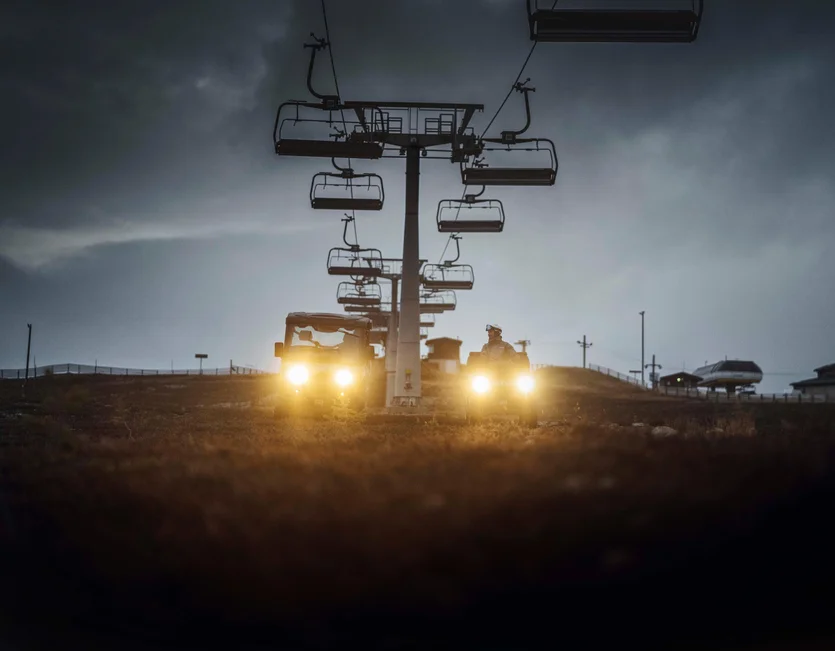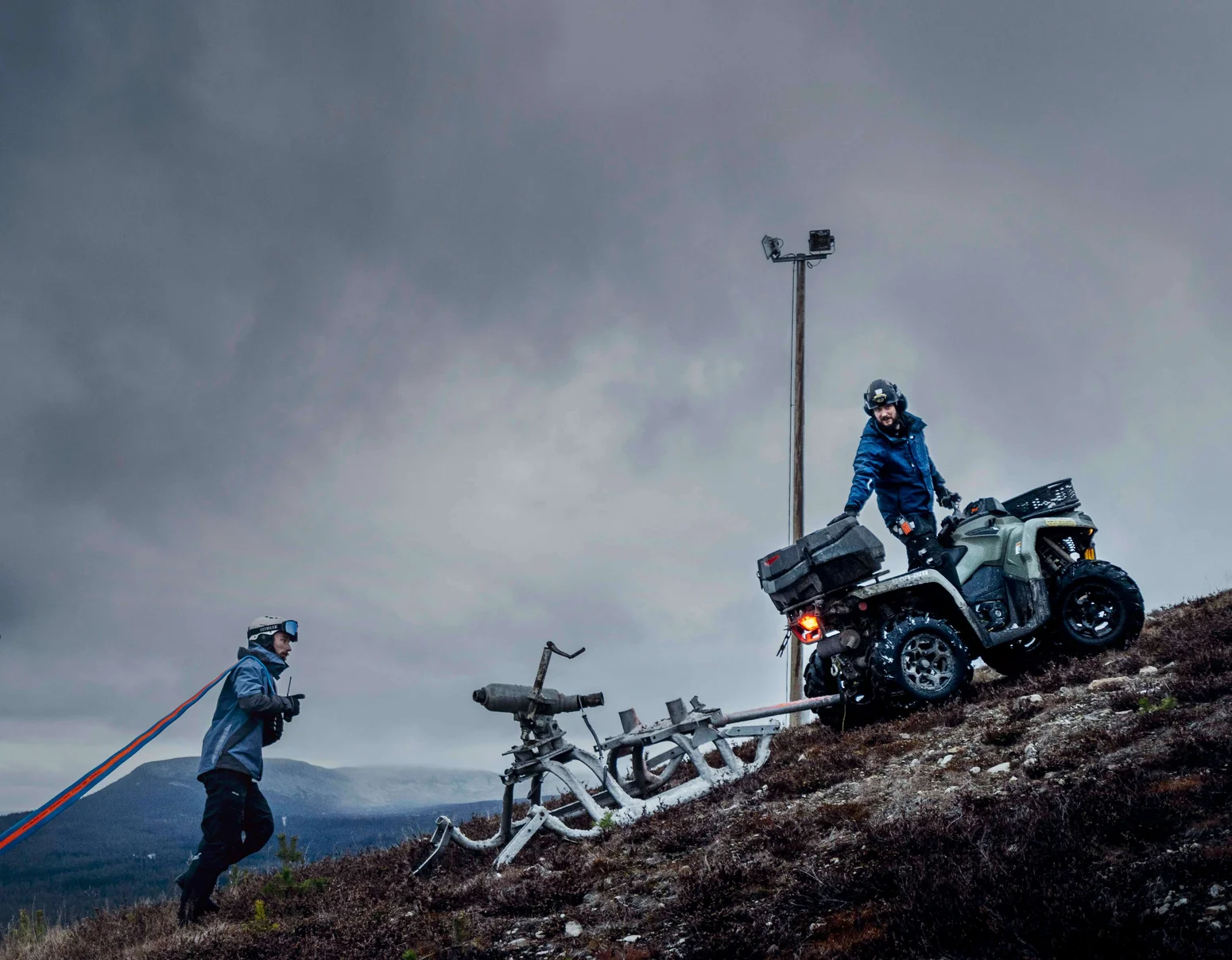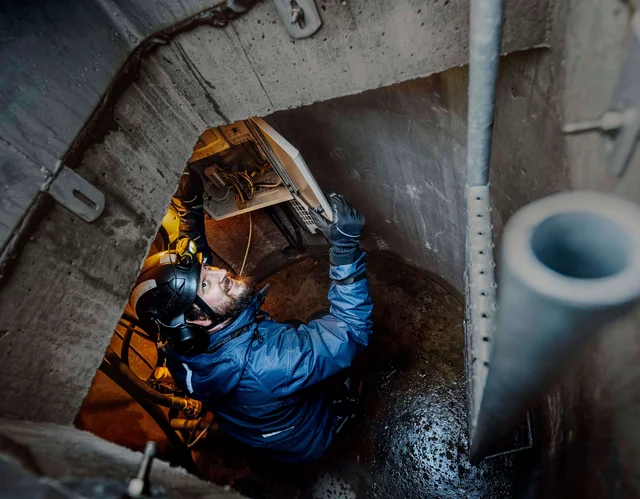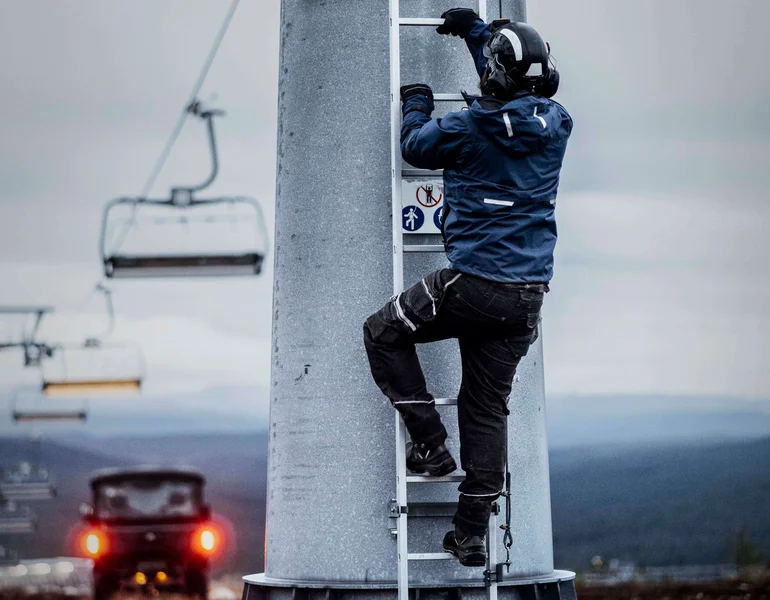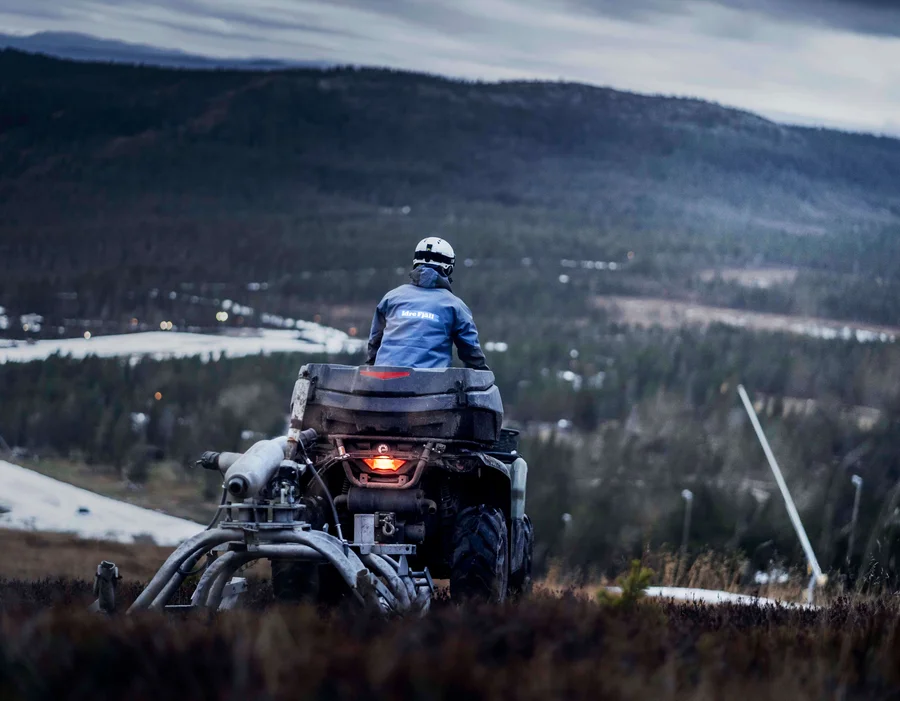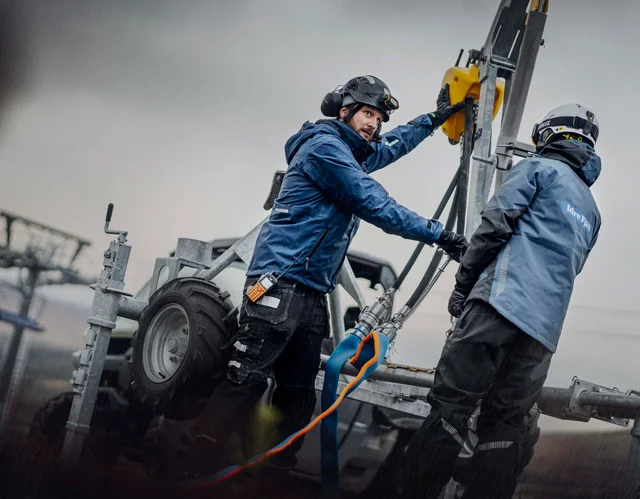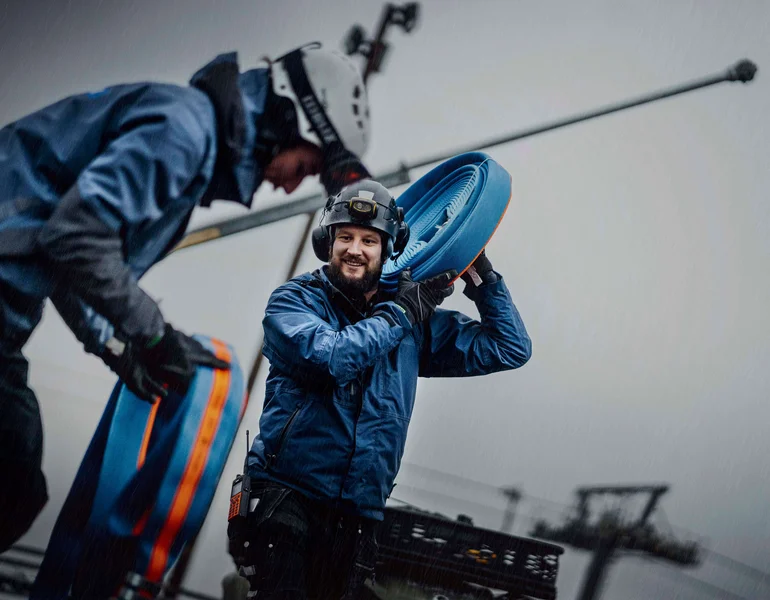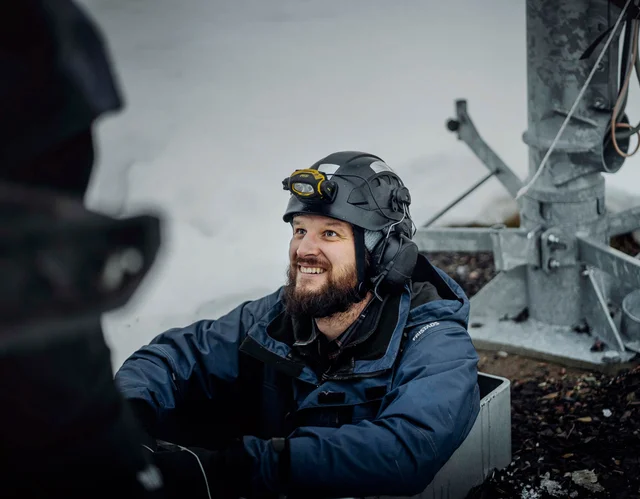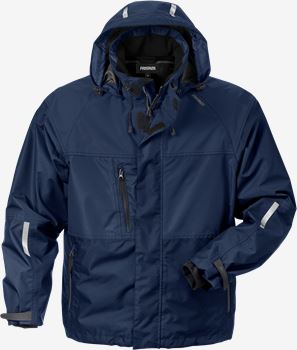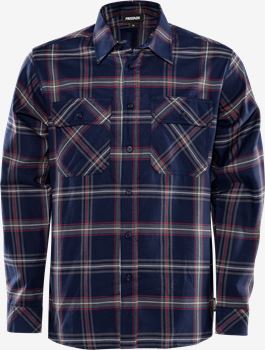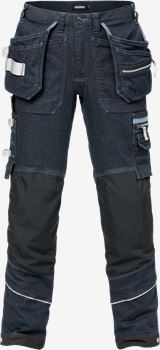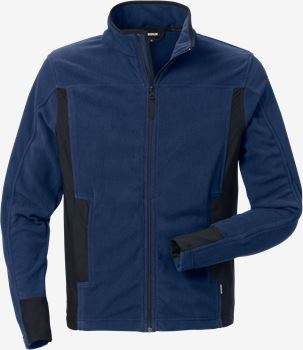
Behind the Scenes at Idre Fjäll
At 3 am in the dead of winter, the mountains of Idre in northern Sweden are quiet and enveloped in a darkness so thick you can cut it with a knife. At least from a distance. Come closer to Idre Fjäll ski resort and you’ll notice the sweeping headlights and steady hum of four snow groomers that are systematically shaping and smoothing out the snowfields, preparing them for the next batch of keen skiers.
It’s all about the snow
In the beginning of the season, the crews distribute the snow that has been saved from the previous season and stored in big piles under wood chips and tarps. The largest pile is 17 metres high and 100 metres long and contains as much 85,000 m2 of snow. That’s a whole lot of snow. But far from enough to operate the resort with full force – Mother Earth and 150 powerful snow cannons make up the difference. Once it gets colder and snow production is at its peak, as many as 6 groomers work almost around the clock to make sure that the slopes are up to par. Needless to say, everything revolves around snow during the winter season at Idre Fjäll. Making it, moving it, sculpting it. And the maintenance crews are constantly operating at the mercy of the weather.
“If it’s cold, we produce as much snow as we possibly can. If it’s warm, we have to do everything we can to keep the snow we’ve already produced,” says Martin Voest.
“The weather dictates how we prepare the slopes. Sometimes we move the snow around to cover areas where the cover is thin. Then again, if it rains all night and a lot of the snow in the slopes has melted, we have to be careful. If our timing is poor, we risk ruining what we’ve already done.”
Flexible work clothes
Martin Voest, with his dark, bushy beard and big smile, is a trained wilderness guide and medic and has worked at Idre since 2013. Before that, he worked as an arborist in Stockholm for several years. Certainly no stranger to working outside, he says high-quality workwear is key to coping with harsh weather. Comfort, breathability and freedom of movement are some of his top priorities. Plus, good workwear must keep you dry, even if you’re sweating.
“We’re usually busy with work outside all day but the physical intensity varies, so we need clothes that can handle all types of conditions. Some days we might be sweating a ton while digging up pipes or putting up fence. Other days we don’t move around as much, so then we focus on staying warm,” says Martin Voest, who wears Fristads’ Airtech® shell jacket and the matching shell trousers.
“I really like the shell jacket, it’s not bulky and I can use it all year-round. The good thing about Fristads is that they have a wide assortment of workwear.”
A sustainable future?
Dressing for the whims of the weather is one thing, but in the future, the workers at ski resorts everywhere have to plan around an even bigger challenge: Global climate change. At Idre Fjäll, the changes are already tangible. Ten or fifteen years ago, the resort could always count on enough snow to open the slopes last week of October. Today it’s a different story.
“There’s a lot of uncertainty with the climate; it’s definitely affecting us,” says Martin Voest.
The national organisation for the Swedish skiing industry, SLAO, has responded to the climate challenge by presenting a plan for becoming completely fossil free by 2027. At Idre Fjäll, the buildings at the resorts already run on 100 percent fossil-free energy. And don’t be surprised if you’ll see hybrid snow groomers and electric snowmobiles here in the near future.
“SLAO created the road map of where we need to go, now it’s up to each resort to get on board. We’ve started by focusing on the fuel and energy consumption. For example, we’re looking at smart solutions for our facilities, so that we can reduce the temperature automatically if a cabin is empty,” Martin Voest says.
Between climate change and the corona pandemic, ski resorts have no shortage of unknowns to deal with. Still, Martin Voest feels optimistic about the future.
“I think summer tourism will increase in the future and I think winter tourism will grow too,” he says. “I’m sure we’ll still have skiing here 20 years from now – we have a bright future ahead of us.”

